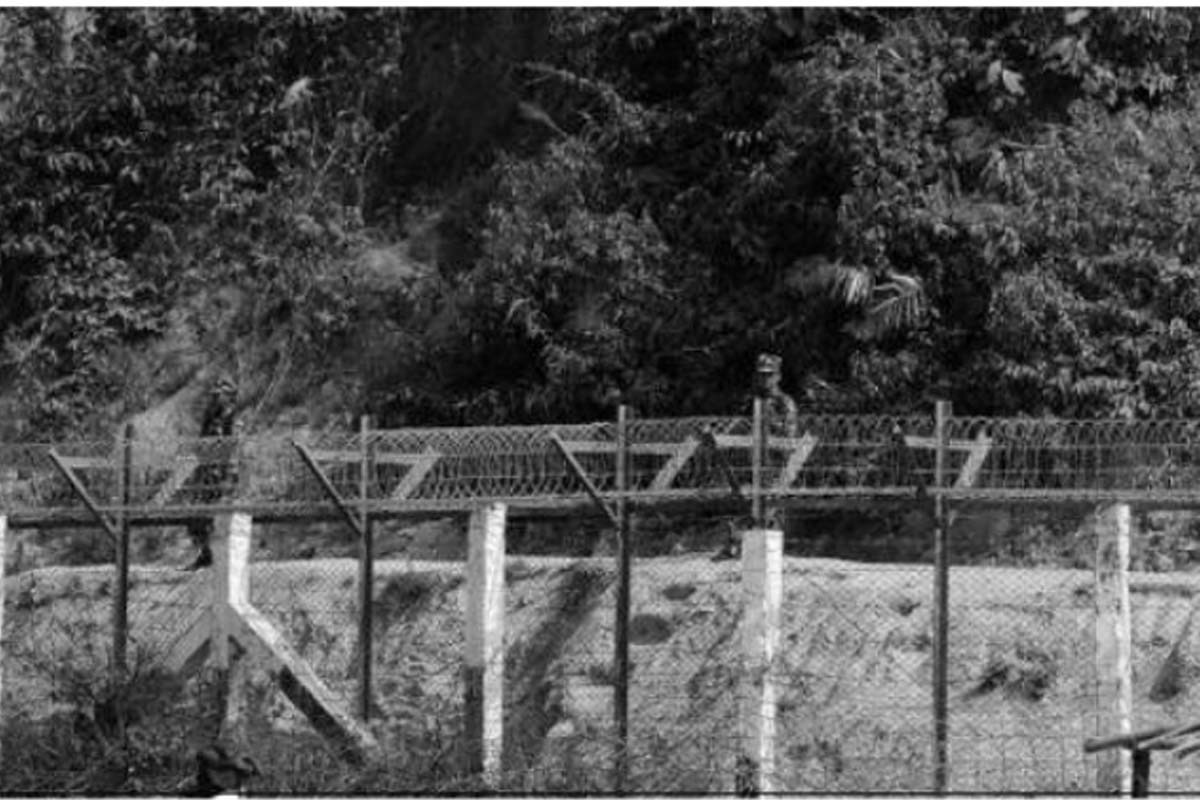In order to counter China’s efforts in augmenting its presence in the Indian Ocean, India is making all efforts to nullify Chinese moves.
The Chief of Army Staff (COAS), General MM Naravane along with Foreign Secretary (FS) Harsh Vardhan Shringla visited Myanmar, after a series of virtual Foreign Office Consultations addressing bilateral cooperation. While congratulating the eastern neighbour for successfully hosting the Fourth meeting of the 21st Century Panglong Peace Conference, India assured its support to assist Myanmar in its democratic transition.
Advertisement
Agreeing on strengthening their partnership on varied fronts, both sides discussed connectivity projects, capacity building, power and energy sector, deepening economic and trade ties, facilitating people to people and cultural exchanges, and broadening the base for defence exchanges across all the three services. They also discussed the progress made by the Indian invested projects: the Trilateral Highway and the Kaladan MultiModal Transit Transport Project. New projects and initiatives like the upgradation of the Yamethin Women’s Police Academy, Basic Technical Training School and measures to provide long-term sustainability to projects such as the Myanmar Institute of Information Technology were also discussed.
In these unprecedented times, New Delhi has displayed its commitment towards deepening cooperation to overcome challenges posed by the Covid-19 pandemic by presenting 3,000 vials of Remdesivir to its eastern neighbour. Foreign Secretary Shringla also mentioned India’s willingness to prioritize Myanmar while sharing vaccines as and when they become available. While appreciating Myanmar for handing over 22 cadres of Indian insurgent groups to India, the duo discussed mutual commitment in terms of security and stability in their borders.
India has also announced a grant worth $2 million for the construction of the border Haat Bridge at Byanyu/Sarsichauk in Chin State, which will facilitate economic connectivity between Mizoram and Myanmar. It has also notified the intake of 150,000 lakh tonnes of Urad (Vigna mungo) for import from Myanmar. Addressing the issue of conservation and repair of Bagan pagodas that had been damaged in the 2016 earthquake, both sides deliberated plans on installing a bust of Lokmanya Tilak in Mandalay to commemorate his 100th death anniversary. Discussions on cultural co-operation also included the translation of Indian epics into the Burmese language.
While agreeing to operationalise the Sittwe Port in the Rakhine State in the first quarter of 2021, Delhi and Nay Pyi Taw took note of the developments made under the Rakhine State Development Programme (RSDP). They decided on finalizing projects under Phase-III of the programme alongside upgrading the agricultural mechanization under the project. The Foreign Secretary ensured India’s support for safe, sustainable and speedy return of displaced persons to Rakhine State.
Bordering Myanmar and Bangladesh, India has a role to play in balancing out the conflicts in the region with respect to the Rakhine State. As a friend and a neighbour to both the states, New Delhi has great interest in stabilising the situation by ensuring timely repatriation of the Rohingya refugees and providing support to Myanmar while dealing with the refugees. Displaced by the Citizenship Act of 1982, the Rohingyas who are an ethnic Muslim minority living in the townships of Rakhine state in Myanmar became officially stateless. After operations like Naga Min (King Dragon) in 1978 and Pyi Thar Ya in 1991, to oust the Rohingyas, the persistent discrimination escalated to communal violence and alleged abuse which forced them to flee to neighbouring regions, especially Cox’s Bazar district in Bangladesh. Ever since, while blaming each other for the Rohingya crisis, there have been a series of rebuttals between Dhaka and Nay Pyi Taw.
From the beginning, India has been trying to play mediator and stabilise if not de-escalate the issue between its neighbours. Committed towards facilitating an early return of the displaced and aiding humanitarian help, India has pledged to provide relief supplies worth $25 million to develop the impoverished region.
The Rakhine State Development Programme undertaken by India strongly aims at improving the socio-economic status of the people in Rakhine State by providing them support in terms of education, health, agriculture, and allied activities which will help development through a grant-in-aid of $5 million per annum.
During the visit of the Army Chief and the Foreign Secretary, India agreed to provide artillery guns, ammunition for T-72 tanks, radars, sonars and 500 bulletproof jackets to Myanmar’s military. The move, reports say, is aimed at countering Chinese influence in Myanmar.
This is not India’s first effort towards reducing Myanmar’s military dependence on China. India is currently in the process of transferring one of its Russianorigin conventional submarines to the Myanmar Navy. The boat has been refurbished in India by the Visakhapatnam-based Hindustan Shipyard Limited. India’s decision to supply a submarine to Myanmar despite facing a shortage of under sea platforms itself points to both its willingness and the necessity to prevent China from gaining a foothold in the Indian Ocean Region. (Concluded)









